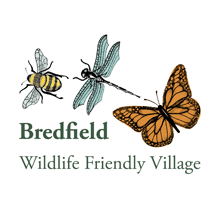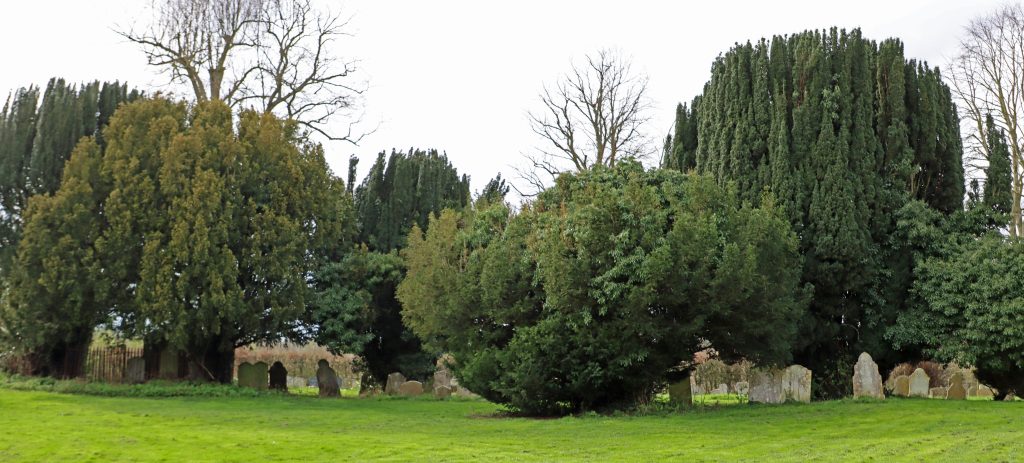
Yew trees in St Andrew’s church grounds
You won’t need me to tell you that there are Yew trees in St Andrew’s churchyard. Do you know how many? My count is that there are about eleven. As we’ll see, Yews have a way of creating adjacent clones, so there could be fewer or perhaps more. Of these trees, two are ‘English’ Yews (Taxus baccata), including the large tree on the right as you enter through the main gate. The other trees are ‘Irish’ Yews, which were probably planted later. The two are not different species. The ‘Irish’ Yew is a sub-species (Taxus baccata fastigiate), which has it leaves arranged around the stem (not just on either side). It also has more tightly packed branches and a density of leaves which render it a perfect cultivar for hedge-makers and practitioners of topiary.
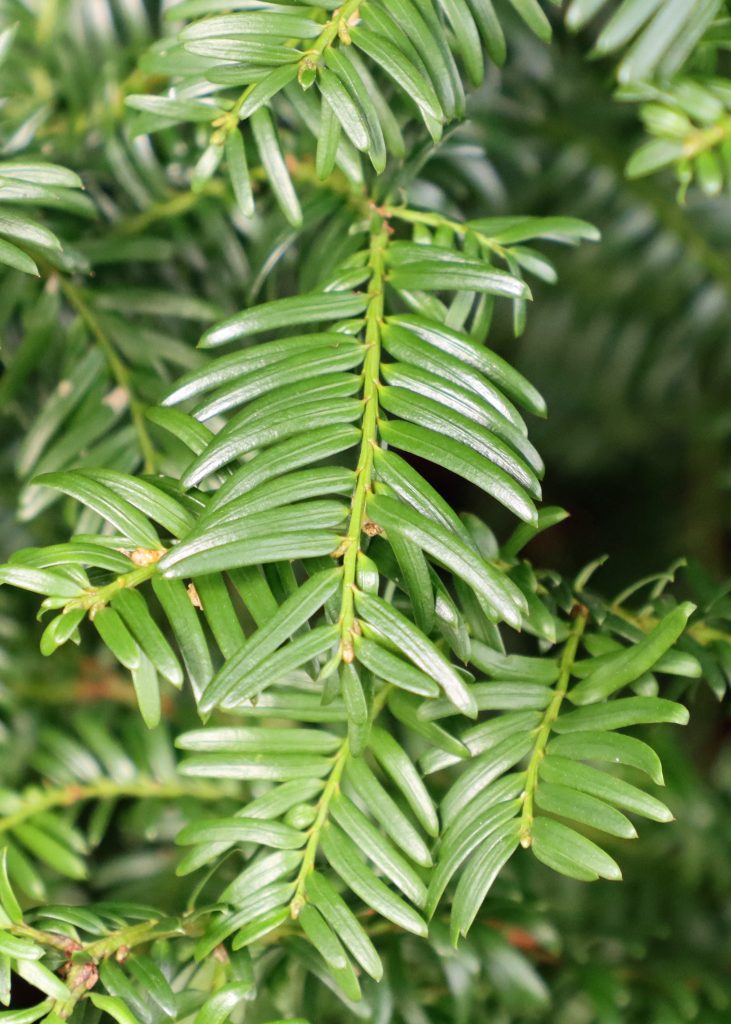
Leaves of English Yew 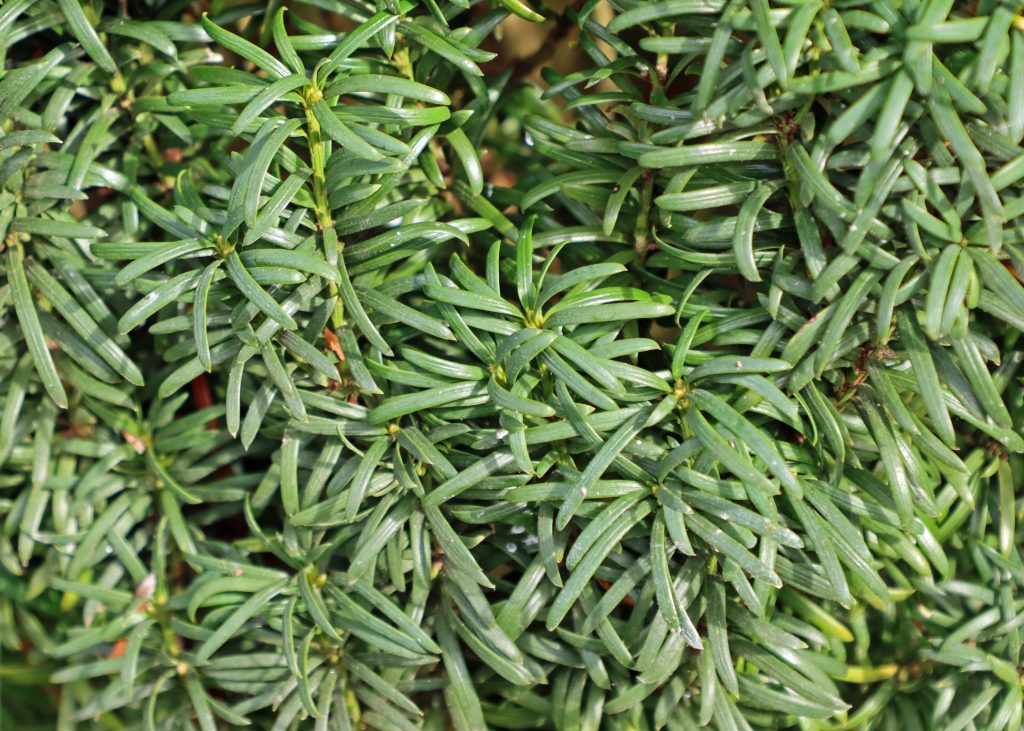
Leaves of Irish Yew
You’d be hard pushed to find any church without a Yew tree standing close by it. The majority of older Yews, especially in the south of Britain, stand in churchyards. So, we have an immediate question: what is the connection between churches and Yew trees?
The leaves and berry seeds of Yew trees are highly poisonous. One story is that the trees were planted to keep cattle from entering the church grounds and disturbing the graves. There is some plausibility in this, though it would seem that a surrounding wall would do a better job. Of course, you could look at this a different way. Because of their toxicity to livestock, and because of the usefulness of the wood (including making longbows – though French Yews were considered preferable), most Yews outside of churchyards may have been cut down and the only ones remaining were those respectfully left within the churchyard. However, the main reason for neither of these explanations being the whole truth is that many churchyard Yews have been found to be older than the churches in whose grounds they stand. Some of Britain’s oldest Yews are well over 2,000 years old! They were there before the church.
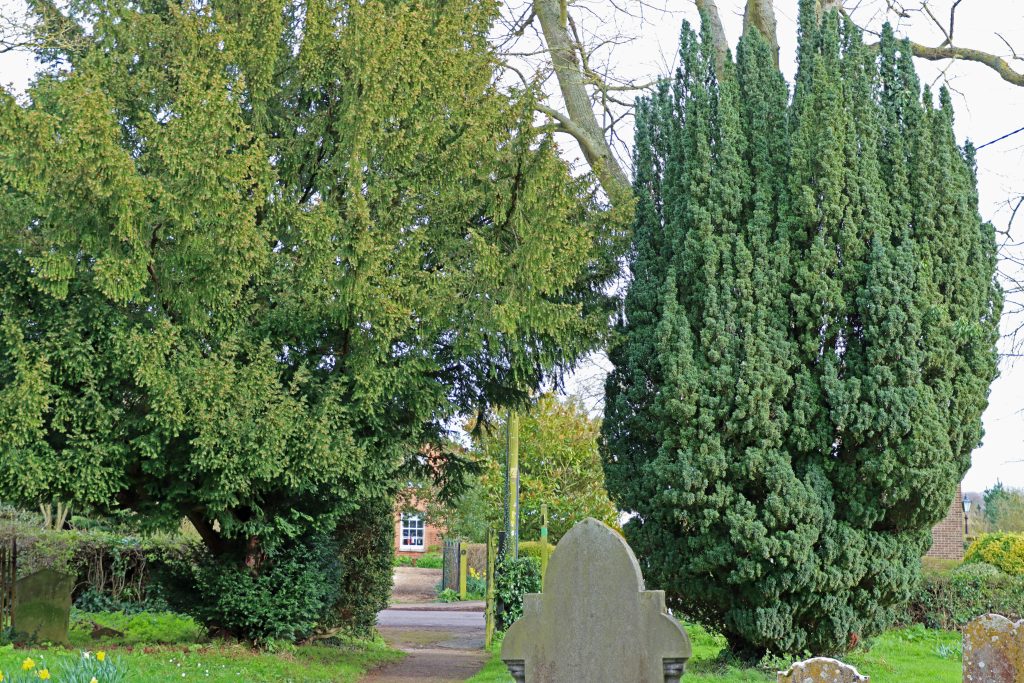
Yews at entance to St Andrew’s: English Yew on left; Irish Yew on right.
Mythology and folklore surround the Yew tree. The Yew has long been a sacred tree and sites with ancient Yews became places of Druidic worship. Druids, the priests of the Celtic tribes, believed wands of yew would banish evil spirits. Some Christian churches may have been erected on places sacred to earlier religions and, thereby, the churchyard inherited the standing Yew trees. Over the subsequent centuries, a new association between Christianity and Yew was fostered. When Yews are damaged or come of old age, they can clone new versions of themselves to grow adjacently or within. Thus, the Yew tree appears as a manifestation of rebirth and immortality – themes resonant in Christianity. For many years, the notion of Christian churches being built on ground sacred to pagan religions was an anathema. However, presuming that proselytizing was a priority of early Christians, it would make sense to take your religion to the meeting places of other religions; places where Yews happen to be a landscape feature.
We will probably never know the full story of the Church-Yew affinity. It would be fair to assume that lots of factors have been at play in a complex and fascinating saga. Now let’s turn to look at the natural history side of the Yew tree.
Yew trees flower from late-February to April, with male and female flowers on separate trees. The female flowers are hardly distinguishable, but the male flowers take the form of cream clusters on the underside of the leaf stem. The trees are pollinated by the vector of the wind, with male trees capable of producing clouds of yellow pollen. This isn’t good news for hay-fever sufferers! Neither is it helpful for early bees and other pollinating insects, as wind-pollinated plants don’t need to produce nectar to attract insects. Bright red berries appear as the year progresses.
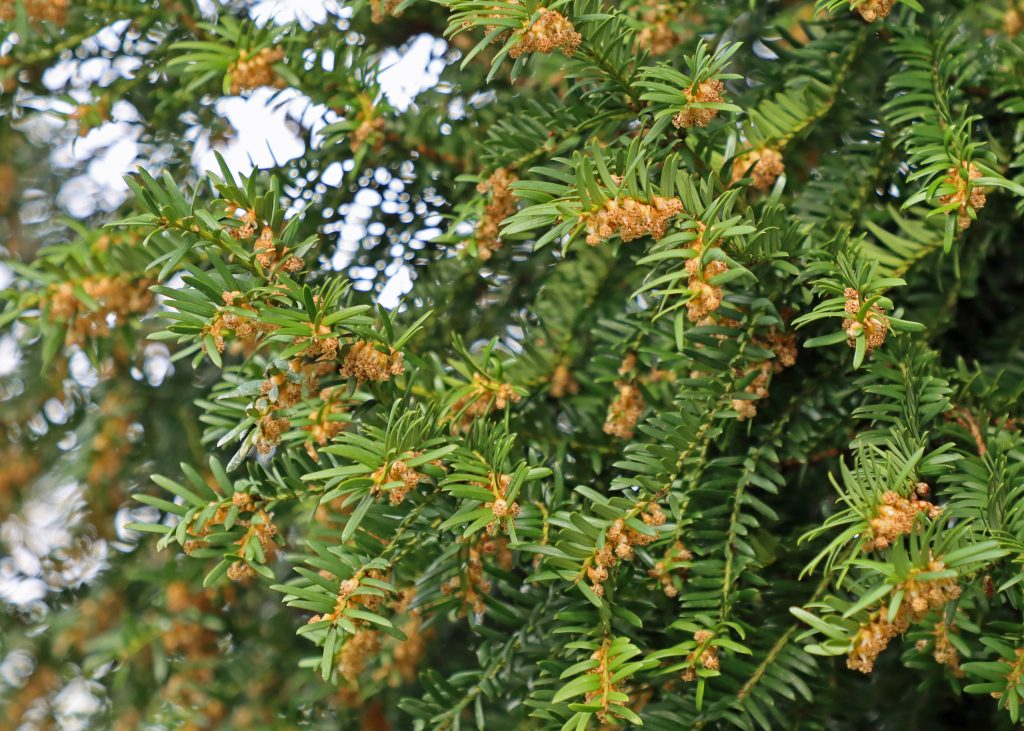
Pollen carrying flowers on English Yew 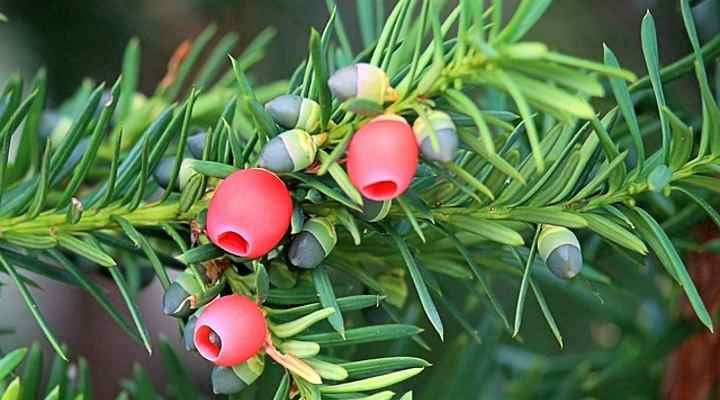
Yew berries
Yews cannot be said to play a hugely significant part in local ecosystems, in the sense that Oak trees could be said to do. However, the Yew tree does have some significance in nature. First of all, the Yew tree has a mass of dense evergreen foliage that provides shelter, especially in winter, for a number of birds, insects, spiders, bats and other small mammals. Hollows in Yews make excellent nesting sites, while their canopies are often used as nests by Goldcrests, Britain’s smallest bird. The red berries of the Yew have poisonous seeds, but the flesh of the berries is eaten by several species of bird, most especially thrushes. During the Winter and early-Spring, the larva of one particular moth – the Satin Beauty – can be found feeding on the leaves of Yews.
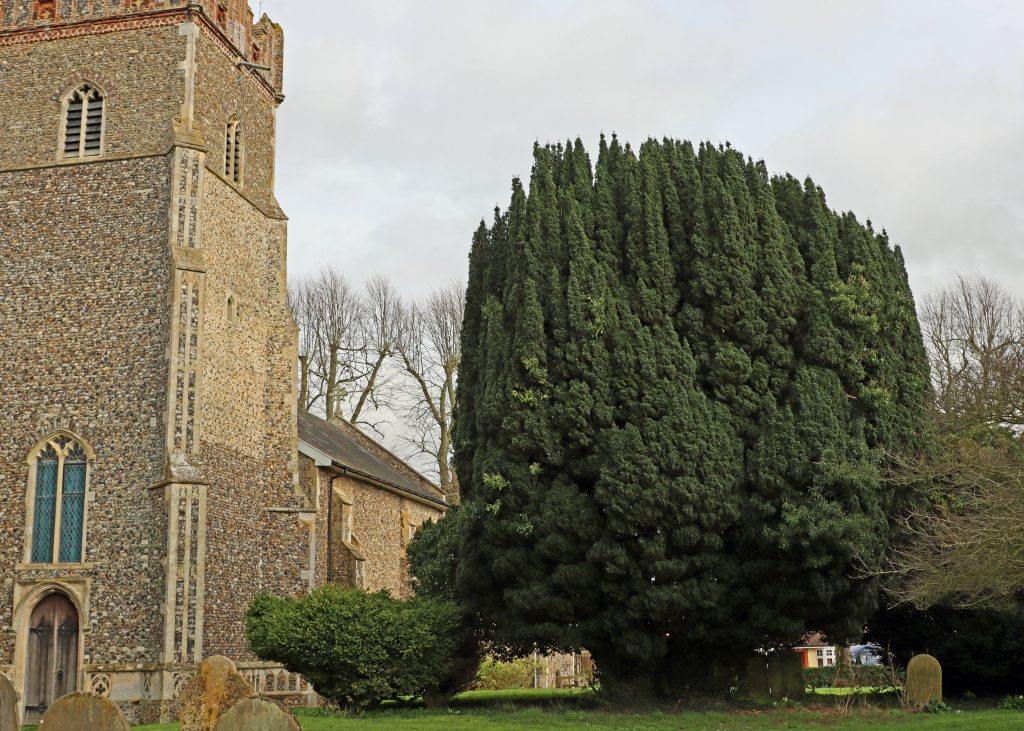
Irish Yew standing tall beside St Andrew’s Church.
Lastly, if you’re looking for a direct relationship between Yews and modern humans, you’ll be pleased to know that anti-cancer compounds used in modern medicine are harvested from Yew leaves. The next time you walk past the churchyard Yews, give a thought to their longevity, their place in nature, their usefulness, and the mythology that surrounds them.
This article also appeared in the Bredfield Lantern, though with fewer images.
